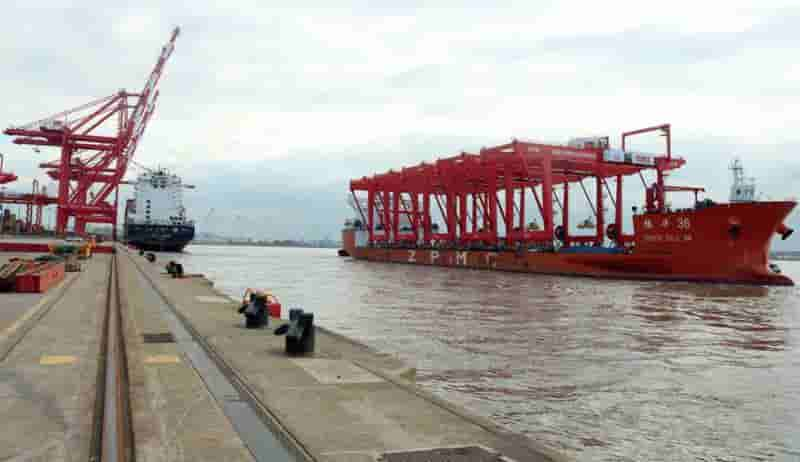Peel Ports’ orders for new cranes for the Port of Liverpool in recent years have marked another leap in Liverpool’s return as a primary maritime city.
This year alone, the port has taken delivery of 10 cantilever rail-mounted gantry cranes (CRMG) and three ship-to-shore (STS) cranes from ZPMC as part of the next phase of growth at Liverpool2, the port’s £400m deepwater container terminal on the River Mersey. They join the 12 CRMG and five STS cranes from ZPMC installed in phase one.

In addition, Peel Ports has placed an order for two new Liebherr STS cranes to replace two existing models at the port’s original facility, the Royal Seaforth Container Terminal (T1), which sits in a controlled dock area of the river. The older cranes will be relocated to Peel Ports’ Greenock Ocean Terminal at Clydeport in Scotland.
As well as securing Liverpool’s place on the UK’s maritime map, the new cranes help to future-proof its operations. In 2014 when the port began the tendering process for the first CRMGs and STS cranes for phase one of Liverpool2 it had to increase the draught because shipping company Maersk had just launched the Triple-E, the largest container ship in the world, with a carrying capacity of 18,000 TEU.
“Liverpool2 isn’t constrained by dock gates like T1, and container vessels are getting longer, wider and deeper. We had to make sure the port could accommodate the biggest vessels in the world in 10-15 years’ time and that puts more demand on the structure and design of the cranes,” says Damian Cross, the port’s head of technology and engineering development. “We wanted the cranes to be as automated as possible in order to be efficient, effective and competitive as a UK port, and we need the option to add more technology as the shipping industry advances.”
As a result of investments, the Port of Liverpool is challenging some of the UK’s bigger ports, says Cross, adding that Liverpool2 now has the capacity to unload two 380m vessels simultaneously.
The CRMGs from ZPMC are 35 metres high and each weighs around 500t.
The CRMGs are deemed semi-autonomous as 90% of their functionality is completely automated and, when specifying the cranes, the port wanted the latest cutting-edge technology to scan and accurately control the positioning of the containers.
“Safety is paramount over everything,” says Cross. “The smallest thing we move is a 20ft box that can weigh 30t so we require safe control as well as millimetre accuracy when stacking containers.
“The technology on the crane also needs to self-measure, self-control and self-calibrate and provide all that data so the maintenance teams and operations teams can make decisions and plan works to ensure we are as effective as possible and moving as many boxes every hour as we can.”
Unlike the CRMG cranes, the STS cranes do have a driver but the level of automation included builds in efficiency. “An experienced driver may be able to move 30 or more boxes an hour, whereas a new operator couldn’t, but the crane has functionality that can push their performance to meet that of an experienced driver to maintain efficiency across shifts. We want a vessel to have the fastest turnaround possible; it’s more cost-effective for the customer and efficient for us,” says Cross.
Laser scanners are an important feature on both crane types. On the CRMG cranes, the scanners don’t just check the siting of the container, but also whether it has a gimbal, and they have a similar use on Liverpool2’s STS cranes. “The vessel is out on the river so it’s affected by the tide – which here has a range of about 10m – the swell and the weather. The scanning devices on the STS measure whether the ship is moving around so when the operator is picking up a box it makes the process as efficient as possible,” says Cross.
The 13 new cranes installed at the Port of Liverpool this year will help to drive efficiency
没有评论:
发表评论